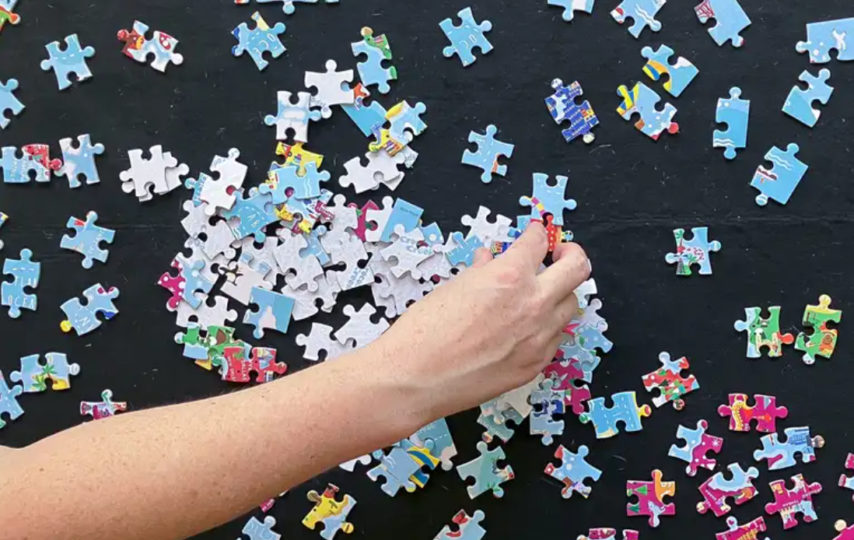With a history stretching back to the 1700s, jigsaw puzzles are among the world’s oldest stress-relieving hobbies. A jigsaw puzzle, often called a piece puzzle, is a collection of irregularly shaped pieces that must be joined. When the pieces are assembled, a clear picture emerges. First, the parts are cut from paperboard or wood using a jigsaw. One of the most significant aspects of jigsaw puzzles is that the game grows increasingly challenging as the image becomes more complicated.
Although there are numerous ways to assemble jigsaw art games, from random to meticulous, it is always advisable to prepare ahead before beginning. You may ask what the ideal method for jigsaw puzzles is or what you need to accomplish before beginning. This article offers advice and strategies for solving jigsaw puzzles in an orderly and fun method for people of all ages.
- Select your jigsaw puzzle.
It is vital to choose a puzzle by paying attention to its difficulty level and its imaginative appeal. The difficulty (and your method for completing the puzzle) is mostly determined by the number of pieces and the image’s design. Generally speaking, designs with more colors and different parts are easier to navigate.
A 100- or 200-piece jigsaw puzzle is an excellent starting point for novices. The larger format pieces require less focus to sort and assemble but still offer a fascinating experience. Intermediate puzzle enthusiasts might try their hand at 300 to 750-piece puzzles, which are more difficult but well worth the effort once the last piece is in place. Those seeking a serious test of expertise can try 1,000- or 1,500-piece puzzles.
Selecting a topic or style that ties to your interests is beneficial. These jigsaw art games come in different themes, including stunning landscapes, animal sceneries, complicated patterns, etc.
- Plan in advance
Before beginning to solve a jigsaw puzzle, and fit the pieces together, conduct some preliminary planning. Consider how long you intend to spend puzzling; if it’s a long-term project, the kitchen table may not be the best place to set up. Some choose to protect their projects with jigsaw frames and glue, requiring more thinking before beginning. Nonetheless, plan accordingly.
- Prepare your working space.
The best settings for assembling puzzles typically have certain characteristics. Mainly adequate lighting, the appropriate surface, and comfortable seats. In dim conditions, staring at little pieces for an extended period is challenging, strains the eyes, and complicates sorting pieces. Have a lamp nearby for easy access to additional light when required.
As for the surface, avoid working on slippery tables with poor traction to prevent the puzzle from slipping and overly soft fabric surfaces. Try puzzle tables or roll-up mats with just the right tack and stiffness to prevent pieces from becoming lost. Moreover, dedicated tables facilitate storage and organization. When attempting to solve a jigsaw puzzle, doing it in a peaceful, distraction-free environment is also beneficial.
- Start solving your jigsaw puzzle.
Now it’s time to start solving your jigsaw puzzle. Here’s how to do it.
- Flip each and every piece
With the jigsaw pieces on a table or puzzle mat, you should begin by inverting them all. That is somewhat tedious, but it will save you time and make your puzzle-solving more efficient in the long run.
- Identify the corners
Find the four corner pieces next. The two straight edges that make a 90-degree angle are typically easy to identify; however, locating them in large puzzles may need patience. Likewise, turning all your pieces face up before the game will be beneficial. Remember that this step may not apply to all shaped jigsaw puzzles.
- Beginning with the edges
One of the oldest tactics in the book is to begin bringing your puzzle to life by assembling all of the edge pieces. It is acceptable not to construct the entire border at the outset, but linking as many edge pieces as possible provides a robust framework. In addition, it allows you to work in portions and prevents things from becoming too cluttered.
- Sort by color
This is a particularly effective method for solving puzzles with numerous pieces. Begin by sorting the pieces into heaps based on their color and then subdivide to match more particular colors, patterns, and images. This will assist in dividing the process of solving the puzzle into smaller, more manageable chunks.
- Take breaks
Finally, remember to take the necessary breaks. When you are stuck on a given section, it can be helpful to have fresh eyes on it. It’s a lot of fun to solve puzzles, and you’ll appreciate it more if you allow yourself time and space!








